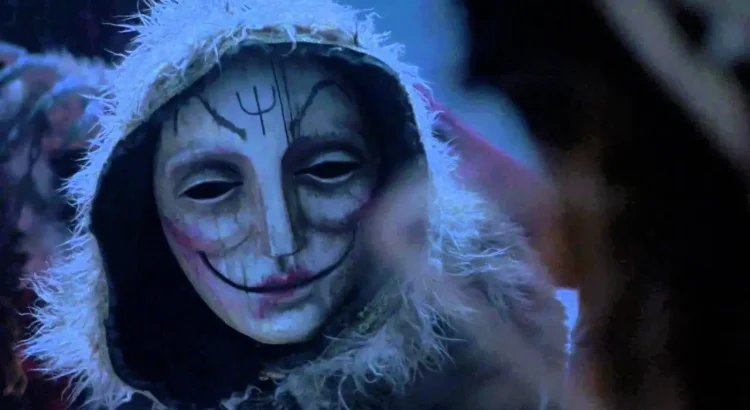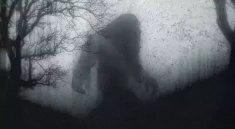when Horror Yearbook – The Legend of Krampus tells a chilling tale alongside Santa Claus. While Saint Nick rewards, Krampus punishes the misbehaving. Rooted in Alpine folklore, he walks with chains and cloven hooves. Horns curve from his head like a goat’s. A long, red tongue hangs from his open mouth. He carries a basket to take naughty children away. This isn’t a sweet holiday fable—it’s a nightmare with bells. In many parts of Europe, Krampus is still celebrated. He shows up during festive parades and wild street processions. Children scream, laugh, and sometimes cry. Parents often use his name to keep kids in line. The line between fear and fun blurs in Krampus traditions.
Where the Monster Comes From
Krampus comes from pre-Christian Alpine traditions. Pagan legends inspired this dark winter spirit. The name “Krampus” comes from the German word krampen, meaning “claw.” Ancient stories painted him as a forest creature. He punished the wicked long before Christmas existed. Christianity later absorbed him into December traditions. By the 17th century, Krampus had joined Saint Nicholas. Together they traveled door to door in Austria and Germany. While Saint Nick gave sweets, Krampus gave beatings. Birch branches were used for symbolic whippings. Some families still keep a “Krampus switch” at home. Generations passed the story down through word of mouth. Local cultures shaped his appearance and behaviors.
“Read about: The Tokoloshe: Southern Africa’s Most Feared Folklore Entity”
How Krampusnacht Is Celebrated Today
Krampusnacht, or “Krampus Night,” happens every December 5th. It’s the evening before Saint Nicholas Day. Across Austria, Bavaria, and South Tyrol, towns celebrate wildly. Men dress up in fur and wooden masks. They become the beast with bells, chains, and torches. Streets fill with the sound of clanging and growling. Children hide behind parents or nervously cheer. Locals drink mulled wine and wear devilish smiles. Parades grow larger every year in popularity. Tourists travel from around the world to witness it. Krampus runs blend folklore, art, and raw energy. Town squares become fiery stages for this winter demon. Each community puts its own twist on the ritual.
The Look and Sound of Terror
Krampus wears a terrifying costume with purpose. Heavy fur coats his body, usually brown or black. Carved wooden masks show snarling expressions and twisted horns. Cowbells are tied to his belt for sound and rhythm. Chains drag behind him, announcing his presence everywhere. Some costumes weigh over 30 kilograms. Local craftsmen carve the masks by hand. No two Krampus faces ever look the same. Each mask takes hours of labor and imagination. Flames and smoke often surround Krampus processions. Drums beat as the crowd parts for his path. Even adults sometimes flinch as the beast gets close.
Krampus in Pop Culture
Movies, TV, and comics have embraced the legend. Krampus has appeared in horror films since the 2000s. The 2015 Hollywood movie “Krampus” sparked global interest. Christmas was reimagined with terror and dark humor. Comic books often show him stealing toys and souls. Holiday episodes of shows feature him punishing bad characters. Artists love drawing the monster in festive poses. He appears on holiday greeting cards in Austria and Germany. Some cards date back to the 1800s and show Krampus with children. His image now appears on sweaters, mugs, and T-shirts. What was once folklore now sells in online stores.
“Read more: Barefoot Gains: Why Ditching Shoes Can Boost Your Leg Workouts”
Why People Still Love Krampus
Fear can be fun when controlled and shared. Krampus provides a balance to the holiday season. Santa brings joy—Krampus brings accountability. The tradition turns warnings into art and ceremony. Parents use him not just for discipline but tradition. Adults remember their own childhood encounters with the beast. The ritual bonds communities through shared stories. Parades bring people outside into winter air. Folk traditions feel alive in a digital world. The celebration honors both darkness and light.
Global Spread of the Krampus Craze
In the last decade, Krampus reached beyond Europe. American cities now host Krampus parades each December. Festivals in Los Angeles, Philadelphia, and New Orleans grow yearly. Costumes are shipped from Austria to performers abroad. Social media spreads photos of horns and fire worldwide. Costume contests reward the scariest and most traditional outfits. Museums showcase Krampus masks and Alpine folklore. Books and documentaries dive deeper into his mythos. Global interest keeps old legends alive and evolving.
Krampus and the Holiday Conversation
Families talk about Krampus as part of winter stories. He becomes a symbol of fairness and consequence. The myth balances indulgence with reflection. As holidays become more commercial, old stories gain meaning. Krampus teaches that all actions have reactions. Good behavior earns rewards—bad behavior invites horns. The message stays simple, even when the mask terrifies.



